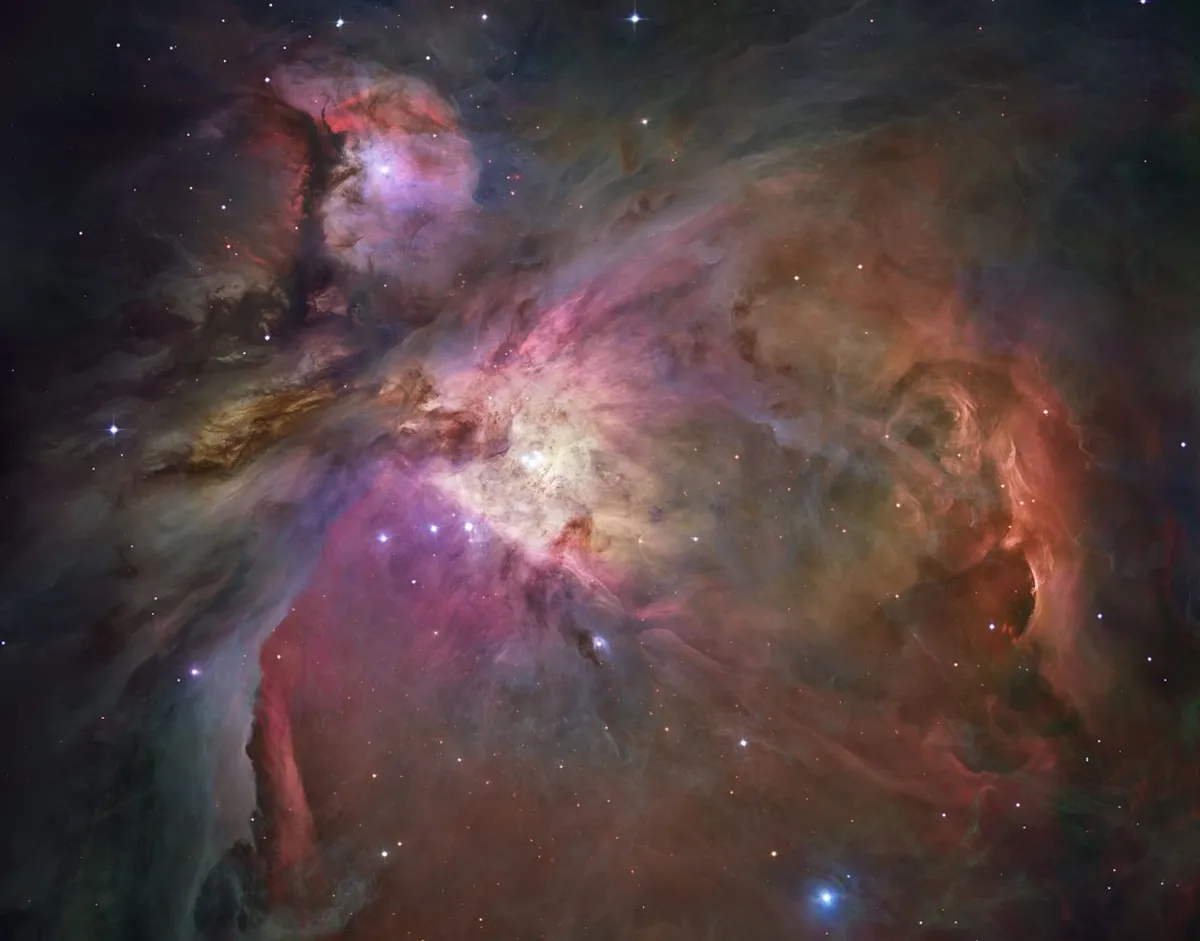I’ve spent longer looking at the Orion Nebula than any other object, peering through eyepieces hoping for one of those moments of clarity that will cause the three-dimensional structure of the gas that wraps around the young stars of this nearby nursery to snap into focus.
A battered poster of the Hubble Space Telescope image of the Orion Nebula was stuck to my wall for years too.
That Hubble image contained within it exciting shadows, the silhouettes of discs
of material surrounding many of the nebula’s young stars.

At the time, they were taken to be the rough material from which planetary systems were forming, and much work has been done since to try to confirm that we are, in fact, seeing the creation of solar systems in Orion.
The authors of a paper, from India and from Edinburgh, are similarly on the trail of newly forming planets, looking not at the main nebula but at neighbouring Sigma Orionis.
Located just below the eastern end of the belt of Orion, southwest of the star Alnitak – and often featuring in images of the Horsehead Nebula – it appears to be a single star to the naked eye.

The first telescopic observers realised it was a binary system, but it’s far richer – we now know that it’s actually a young cluster of stars.
The star cluster happens to lie in a part of the sky where there is relatively little dust lying between us and it, and so it’s a prime target for those seeking to understand the behaviour of young stars.
As in so many studies of the Milky Way and its denizens these days, the authors start with data from the Gaia mission, ESA’s celestial cartographer that has spent most of the last decade measuring the positions and motions of over one billion stars in our Galaxy.
This data allowed the team to confidently identify 170 stars that are part of the Sigma Orionis association; not bad for something which previous generations of astronomers were convinced was ‘just’ a binary system.
The team combined data from the large Canada–France–Hawaii telescope on Mauna Kea in Hawai’i with infrared surveys from NASA’s plucky WISE telescope to work out which of these stars have discs, the dust from which will form planets and which will shine brightly in the infrared.

In all, 40% of the young stars have discs, a number that seemed small to me at first – after all, now we know most stars have planets we should perhaps expect most of them to have discs too.
The authors point out that it is the more massive stars, those weighing in at twice the mass of the Sun, that are missing discs.
These stars, which brighten quickly, presumably shrug off any discs they have quickly, their light and activity being too much for the weakly bound material.
Planets forming in such environments will need to get a move on.
At the other end of the mass spectrum, the team look at brown dwarfs, some of which are small enough that they might as well be planets themselves.
The smallest brown dwarf was shown to have a disc weighing just 20 times the mass of Jupiter – about 2% that of the Sun.
With such tiny stars common across the Milky Way, the most common type of planet may be one with a faint red star in its sky.
Chris Lintottwas reading Protoplanetary Disks around Young Stellar and Substellar Objects in the σ Orionis Cluster by Belinda Damian et al.
Read it online at: arxiv.org/abs/2305.18147.
This article originally appeared in the August 2023 issue of BBC Sky at Night Magazine.

